Research Article:
K-12 Teacher Demographics are strongly correlated to OER Awareness
Julia E. SeamanJeff Seaman
Nate Ralph
Bay View Analytics, with support from the Hewlett Foundation, conducts annual, national surveys of K-12 teachers and administrators on topics related to curricula adoption, and tracking awareness levels of Open Educational Resources (OER) — learn more here. While we take every effort to ensure our response panels are nationally representative, accounting for variables like geography, respondent demographics and the like, we were interested in comparing our results with those from similar K-12 teacher panels. How would a new audience respond to our survey questions?
To find out, we participated as a researcher in the Rand Organization’s Fall 2022 Omnibus Survey, submitting questions for its American Teacher Panel. This panel is a nationally representative sample of educators who regularly provide feedback on important issues of educational policy and practice. The Rand organization’s dataset allowed us to explore further, gathering more details on how specific school and teacher variables are related to OER awareness levels.
We’ve made some observations, comparing our dataset with this new information, and found some interesting similarities. We’ve included some of these insights below.
Direct Comparison
To start, we’ll compare the responses from the Rand survey panel of K-12 teachers with those from our 2022 K-12 OER survey. Our results show that there are similar levels of OER awareness between both samples, with 28% of the Rand survey panel being at least “Somewhat aware” of OER, and 30% of the K-12 OER survey respondents being at least “Somewhat aware.” Overall, this supports that our own K-12 panel is a rigorous and valid survey panel.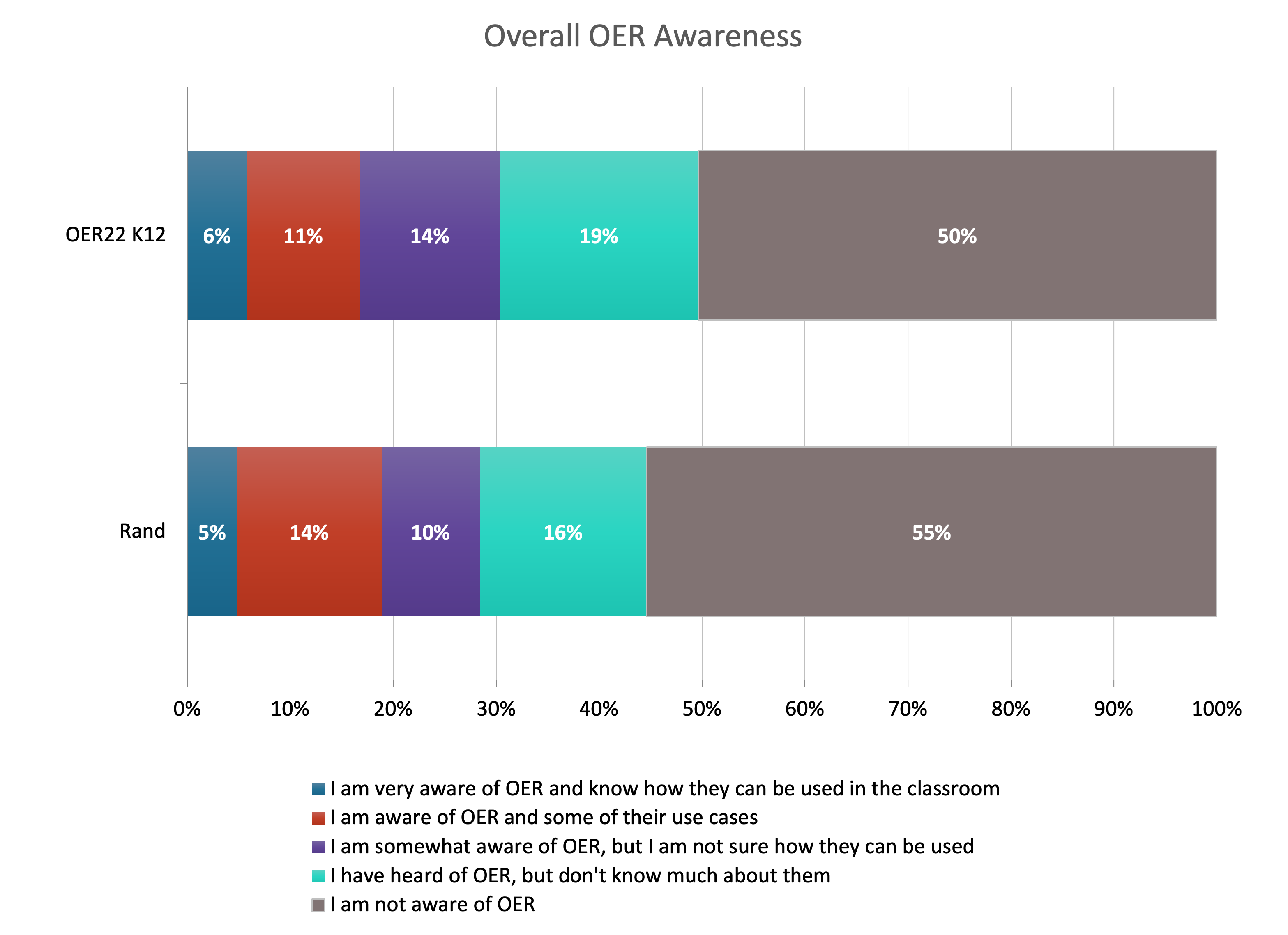
Teacher Gender
Exploring the Rand American Teacher Panel data shows the level of OER awareness also has some correlation with teacher demographics. At every measured level, male teachers were more likely to respond that they were aware of OER than their female counterparts. This was most evident at the “Very aware of OER” range: 9% of male teachers responded that they were very aware of OER, as compared to just 4% of female teachers.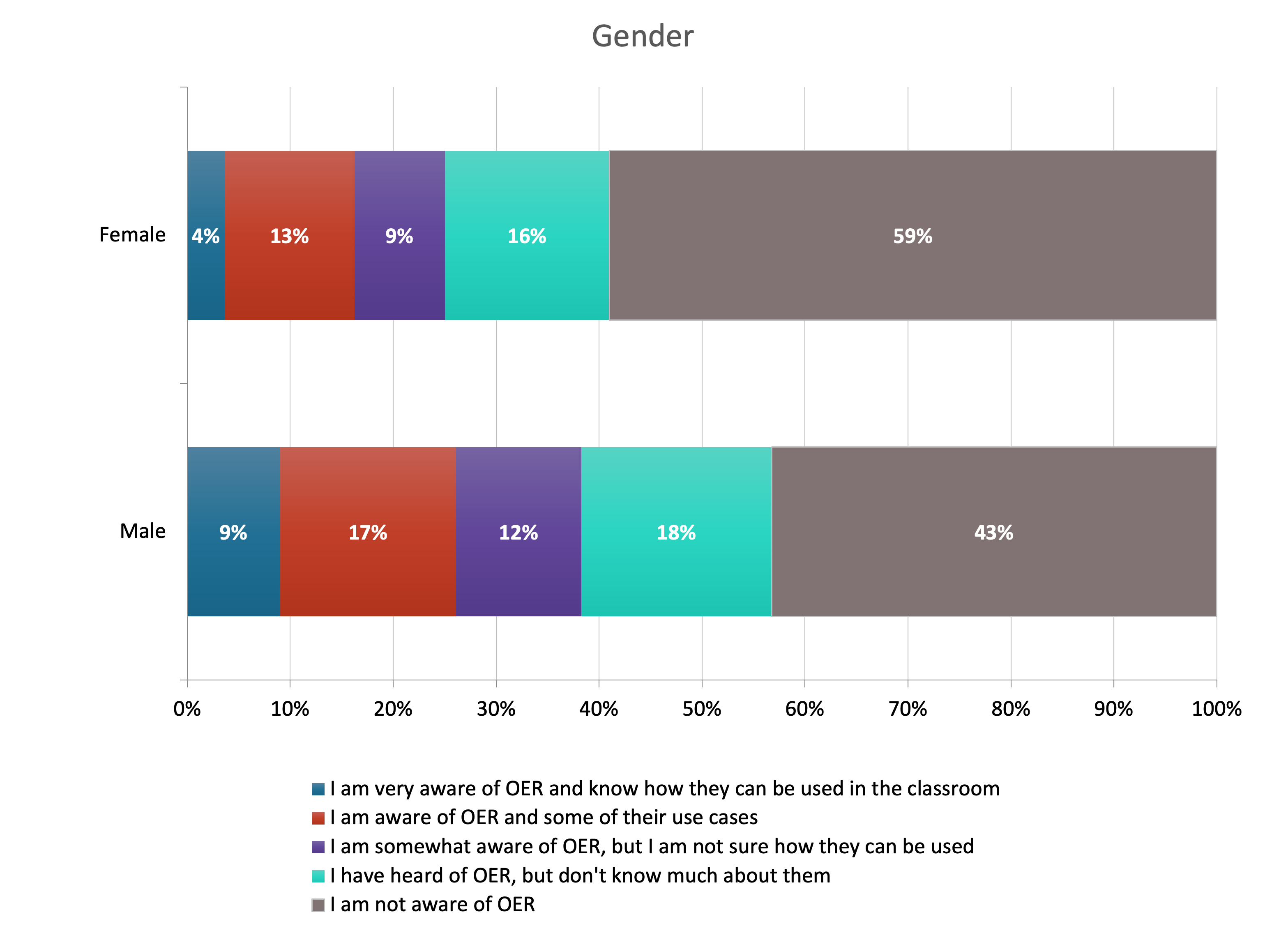
Grade Level
Levels of OER awareness among teachers are related to grade level. Middle- and high-school teachers were likelier to report some awareness of OER, at 54% and 53%, respectively. Conversely, teachers at the elementary grade level were the least likely to be aware of OER, at 65%.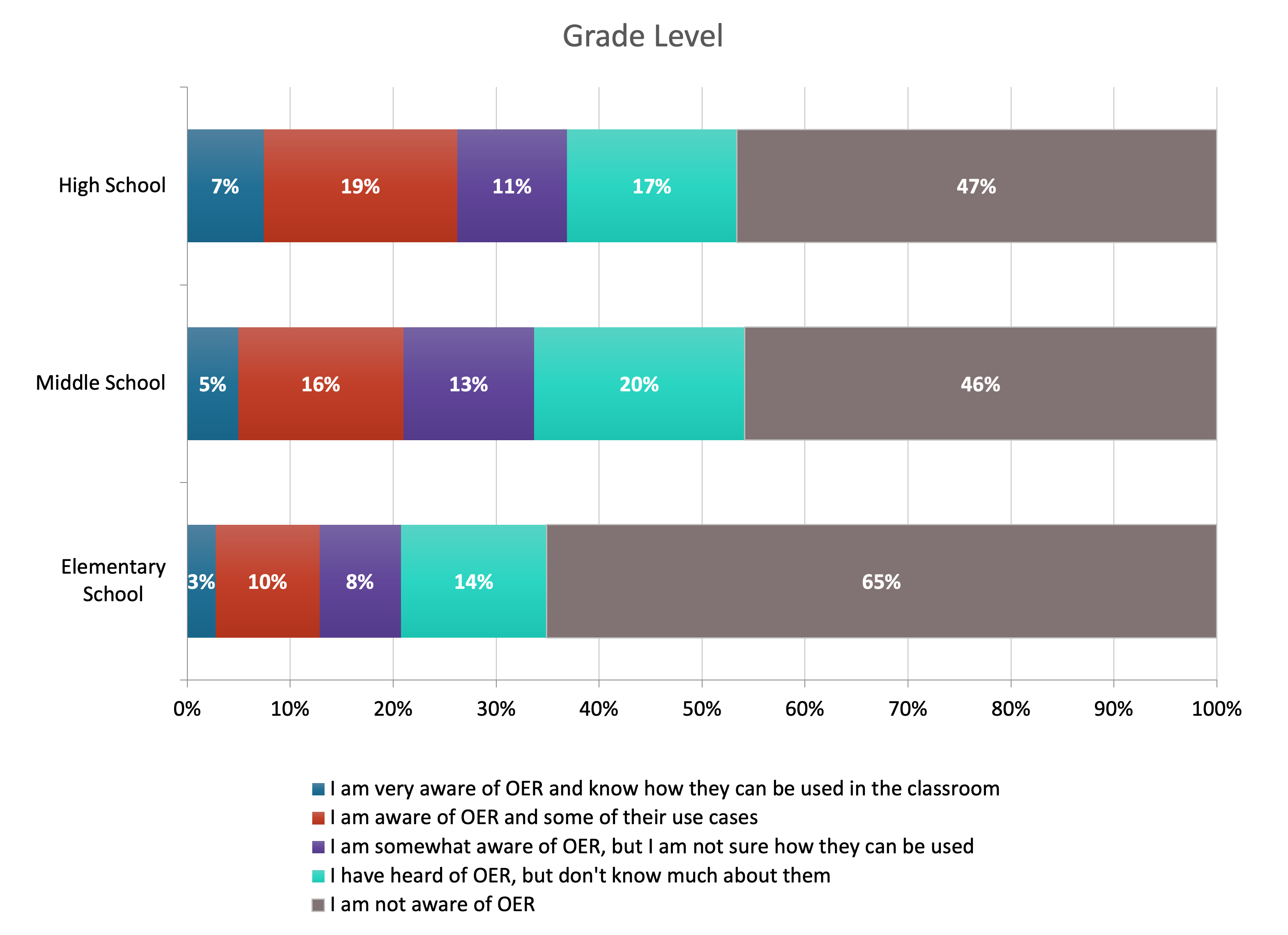
Geographic Region
Teachers in towns and rural regions were the likeliest to report familiarity with OER, with 49% of those respondents claiming some level of awareness. That said, there is about a percentage point of difference between the town/rural, suburban, and urban regions at the “Very aware” level.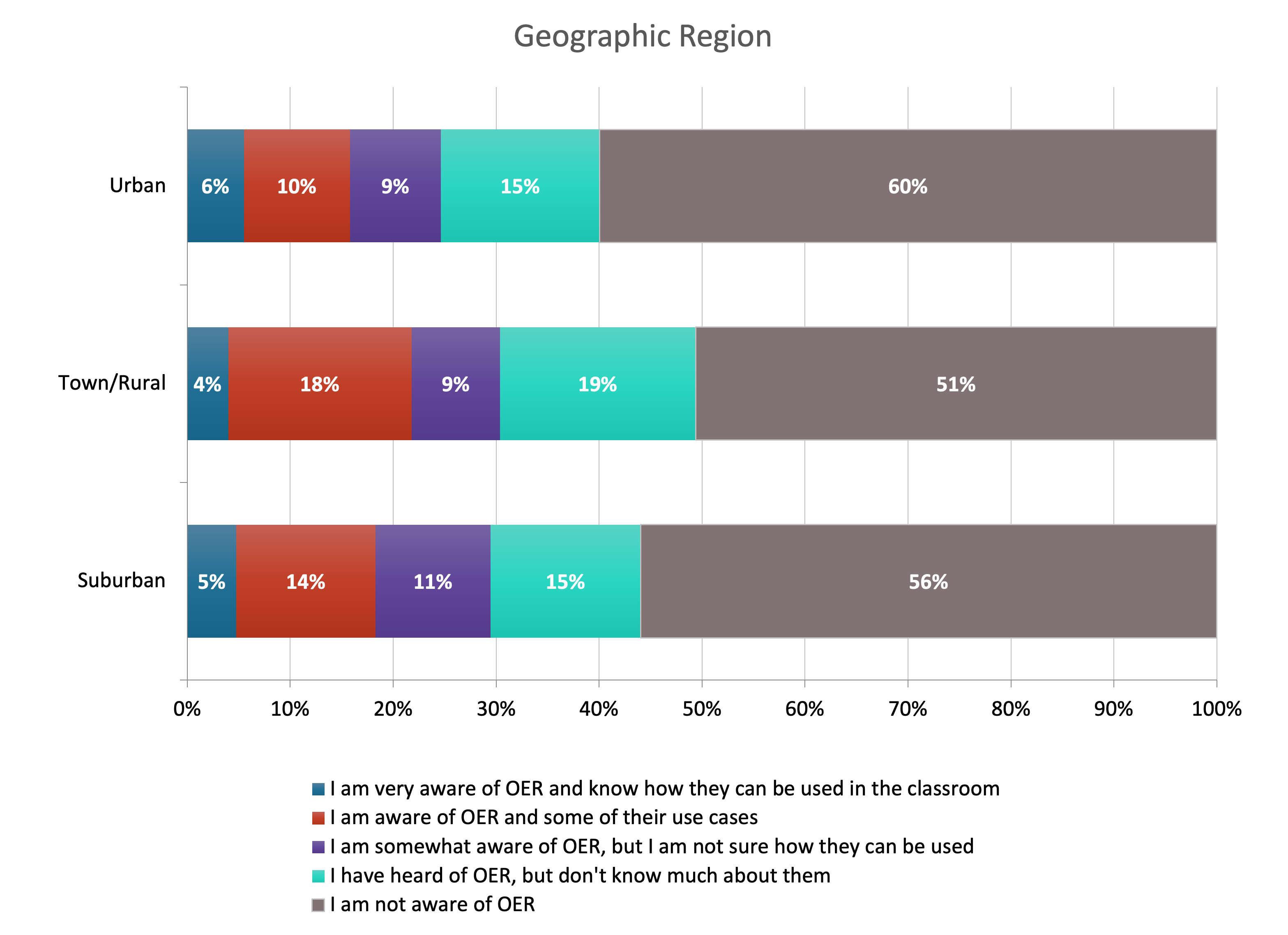
Schools Where the Majority of Students are White
At K-12 schools with a primarily white student population, teachers were much likelier to report higher awareness of OER. However, these two groups have similar levels of awareness at the higher “Aware” and “Very aware” (both at 19%). The biggest difference are for respondents that have only “Heard of” or are “Somewhat aware” (31% vs. 21%).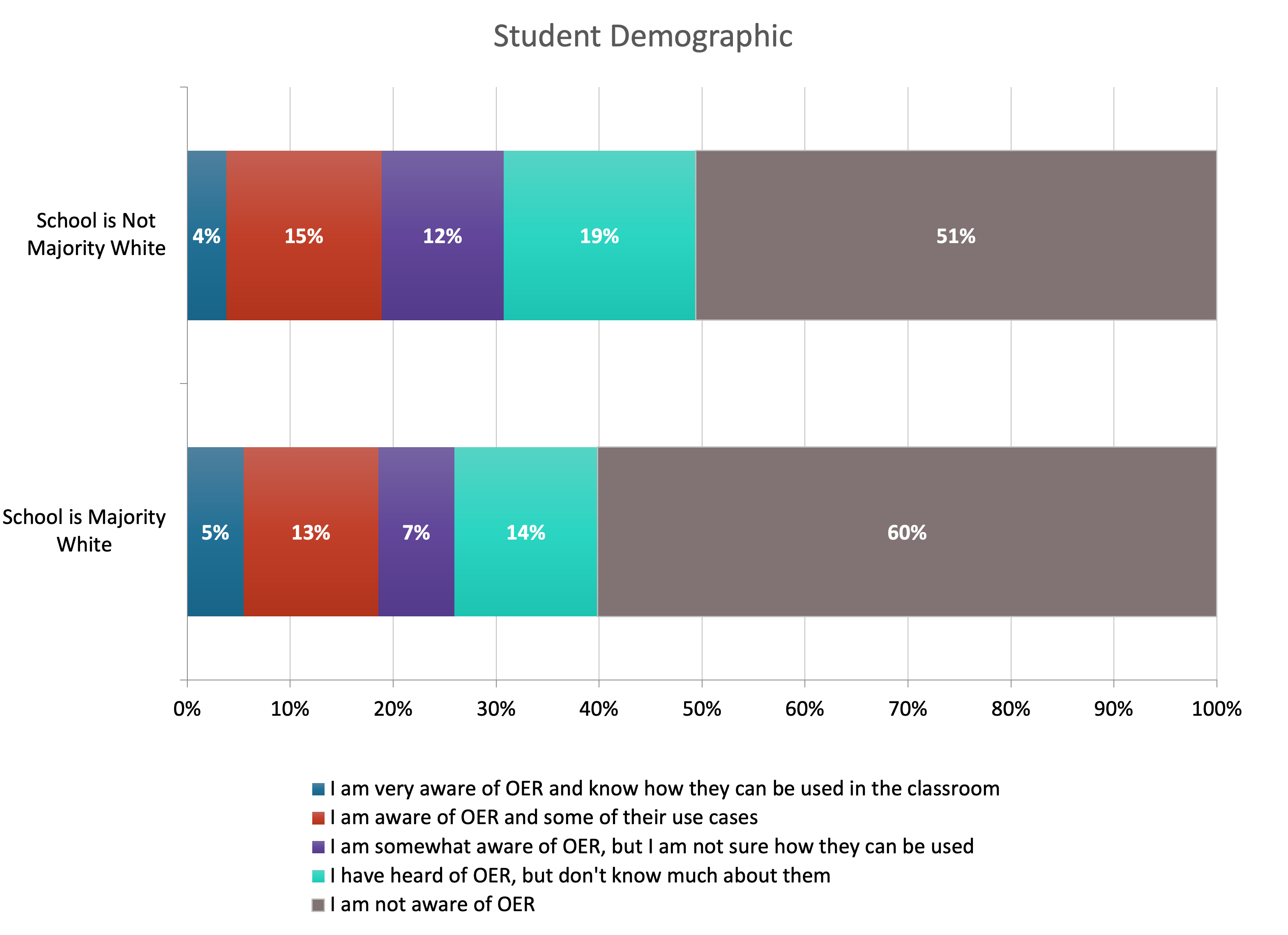
Conclusions
These results show that OER awareness varies by teacher circumstances and demographics. For example, a high-school teacher in a rural area is much more likely to know about OER than an elementary school teacher in a school where the majority of students are non-white. Additionally, there are differences in the level of awareness across the respondents – with some groups more likely to be aware of (and likely use) OER, while others are just aware of OER as a concept.This research can help identify the gaps in OER awareness, and will be a critical first step towards driving OER adoption in K-12 education. To that end, the parallels we’re seeing between the responses to our 2022 OER survey and those from the national Rand dataset indicate that our respondent groups are similar, and bodes well for our survey efficacy.
There is a lot of room for improvement and increasing awareness of OER across the K-12 demographic, but efforts need to be tailored to particular schools, and teachers. Our results show that there is a core group of educators who are “very aware” of OER: approximately 5% of respondents are likely OER users. The biggest stronghold — high school — represents the largest potential market for OER materials, with the greatest potential opportunity to meet teacher needs, and learn how to best expand the reach of open educational resources in the future.
Recent Publications
Digital Learning Pulse Surveys
- Infographic: 2023-2024 Digital Learning Pulse Survey
- The Digital Transformation of the Community College
- Planning for a Smaller Future: Dealing with Declining Enrollments
Course Material Affordability
- Pennsylvania Course Materials Survey 2023
- Pennsylvania Course Materials Presentation
- Course Material Webinar Slides
Open Educational Resources
- Digitally Established: Educational Resources in U.S. Higher Education, 2023
- Curricula of Many Sources: Educational Resources in U.S. K-12, 2023
- Research Brief: Digital and OER Textbook Adoption
- Research Brief: Faculty Satisfaction with Course Materials varies by Publisher
STEM
- Teaching Online: STEM Education in the Time of COVID
- What Makes a STEM Student
- Perceptions of the Future of STEM Education
Distance Education
- Digital Faculty: Faculty Social Media Use and Communications
- Infographic: Digital Faculty
- Grade Increase: Tracking Distance Education in the United States
Follow us on
Privacy
All survey respondents are provided complete anonymity. No personally identifiable information is released. Full privacy policy.